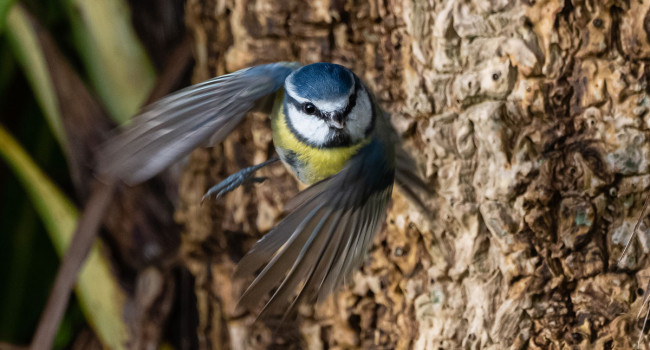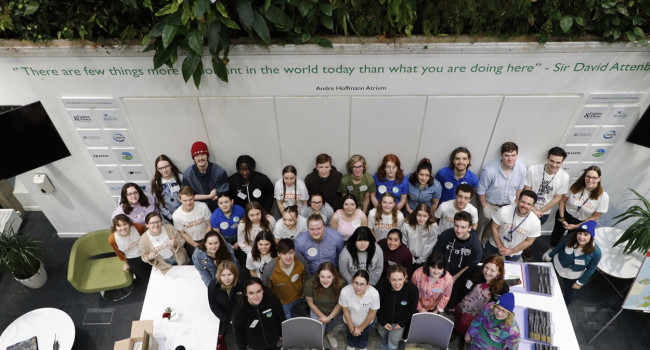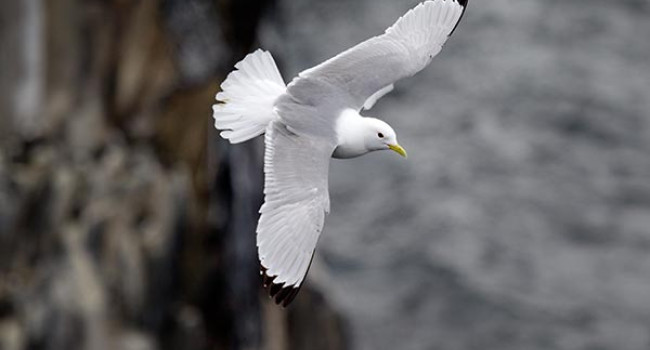Gull decline on Scottish island linked to decline in fishing discards
30 Jan 2017 | No. 2017-03
Latest research, just published, shows a population of large gulls in Scotland failed to thrive as the fish catch landed by the local fishing fleet fell.
Between 1985 and 2000 an annual average of 13,726 tonnes of fish was landed in Mallaig. However, between 2007 and 2014 this had fallen to 4,456 tonnes. This has apparently had a profound effect on the Canna gull population. The number of breeding pairs of Herring Gulls peaked at 1,525 in 1988, Great Black-backed Gulls reached 90 pairs around the same time and the highest number of Lesser Black-backed Gulls was recorded at 63 pairs.
At the latest count around 130 pairs of gulls bred on Canna in total, comprising of up to 95 pairs of Herring Gulls, 18 pairs of Great Black-backed Gulls and 13 pairs of Lesser Black-backed Gulls. This population decline has also been associated with low breeding success, with only a small number of chicks successfully fledging in more recent years.
Simon Foster, lead author on the paper, said:
“The Canna seabird study is one of the longest running annual studies in the world. It is an enormous privilege to be part of the team of highly skilled, dedicated volunteers who have been collecting the data for over 48 years. This has allowed us to track the changing fortunes of seabirds. The gull data are interesting – if you look over a short time period you can see large changes, however over a longer period and using anecdotal information from the 1930s it becomes apparent that Canna gulls may be returning to more normal, albeit lower levels.”
Dr Viola Ross Smith, gull expert at the BTO, said:
“Breeding gulls have a bad reputation, especially in urban areas. However, it is worth remembering that all these species are classed as Birds of Conservation Concern, and the Herring Gull is on the Red List. It therefore seems important to identify the causes of population decline in rural colonies such as Canna, and find ways to conserve the birds at these sites, especially since gulls that fail to breed successfully are known to seek breeding opportunities elsewhere, including in towns and cities”.
Contact Details
Dr Viola Ross-Smith
(British Trust for Ornithology)
Office: 01842 750050
(9am to 5:00pm)
Email: viola.ross-smith [at] bto.org
Simon Foster
(Scottish Natural Heritage)
Office: 01463 725282
Mobile:07799 338725
Email: Simon.Foster [at] snh.gov.uk
Paul Stancliffe
(BTO Press Officer)
Office: 01842 750050
(9am to 5:00pm)
Mobile: 07585440910 anytime
Email: press [at] bto.org ()
Images are available for use alongside this News Release. Please contact images [at] bto.org quoting reference January 2017 - 03
The BTO has an ISDN line available for radio interviews. Please contact us to book an interview. Office:01842 750050
Notes to editors
This link to the paper will be live at 00.01 31 January 2017http://dx.doi.org/10.1080/00063657.2016.1274287
The BTO is the UK’s leading bird research organisation. Over 40,000 birdwatchers contribute to the BTO’s surveys. They collect information that forms the basis of conservation action in the UK. The BTO maintains a staff of 100 at its offices in Thetford, Stirling, Bangor (Wales) and Bangor (Northern Ireland), who analyse and publicise the results of project work. The BTO’s investigations are funded by government, industry and conservation organisations. www.bto.org
Bird Study publishes high quality papers relevant to the sphere of interest of the British Trust for Ornithology: broadly, field ornithology, especially related to evidence-based bird conservation. Papers are especially welcome on: patterns of distribution and abundance, movements, habitat preferences, developing field census methods, ringing and other techniques for marking and tracking birds.
The study was part funded by the Joint Nature Conservation Committee (JNCC) and National Trust Scotland (NTS). For the full report, please visit http://jncc.defra.gov.uk/pdf/Report_474l_web.pdf
Seabird Monitoring Programme data were used in the analyses. For more information on the programme, please visit http://jncc.defra.gov.uk/page-1550







Share this page